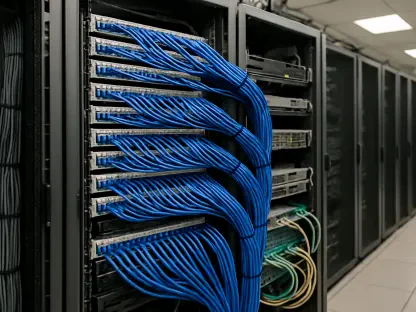In a world where cyber intrusions, kinetic operations, and information warfare collide at machine speed, NATO’s newest technology bets signaled a decisive turn toward hard sovereignty built on cloud and 5G rather than perimeter defenses and paper-based control. The alliance’s communications and IT arm selected an air-gapped deployment of Google Distributed Cloud to process classified data and operational telemetry at the Joint Analysis, Training and Education Centre, fusing analytics, AI, and strict data locality under a single governance umbrella. The intent is not just modernization for its own sake; it is the codification of who owns, inspects, and moves the data that now shapes combat readiness, logistics, and coalition interoperability. Such a move resets the balance between hyperscaler scale and national constraints, making sovereignty a feature of architecture, not merely a policy aim. It also hints at a future where sovereignty is portable across theaters rather than bottled up inside a single data center.
Inside NATO’s air-gapped push
The alliance’s embrace of an air-gapped, sovereign cloud reframed the modernization narrative around verifiable control rather than trust by contract, placing Google Distributed Cloud in a role that combines hyperscale engineering with NATO-governed keys, workloads, and audit trails. At JATEC, the platform is set to ingest sensitive training feeds, simulation outputs, and operational datasets, while enforcing data residency and segmentation aligned to mission tiers. Importantly, this approach made AI a managed capability instead of a security exception, enabling model training and inference within the boundary without sacrificing oversight. The capability stack is deliberately utilitarian: telemetry pipelines for faster lessons learned, hardened runtime for classified apps, and policy-driven access that travels with the data. Against a backdrop of legacy enclaves and stovepipes, the shift brought coherence without collapsing sovereignty into a single vendor’s domain.
The contract also spoke to a broader realignment of the defense cloud landscape, where procurement has increasingly favored multi-cloud portfolios that disaggregate risk and widen innovation options. Google’s momentum in government workloads, underscored by recent UK defense and science agreements, signaled competition in a market long defined by two dominant providers. For NATO, this competition is not a proxy battle between brands but a practical way to align capability with classification levels, latency needs, and jurisdictional limits. By anchoring sovereignty inside the control plane and insisting on air gaps where mission demands them, the alliance avoided the trap of either-or thinking: cloud or security, innovation or governance. Instead, it set a precedent that classified operations can harness modern tooling—analytics pipelines, container orchestration, AI services—without diluting command over sensitive data or the auditability regulators demand.
Why 5G sovereignty changes the playbook
The sovereign cloud story is only half complete without the transport that moves data securely and predictably across borders, which is why NATO’s parallel work with Oracle around mission workloads and 5G security mattered. At the Cooperative Cyber Defence Centre of Excellence, validation of a Security Edge Protection Proxy for roaming traffic, built with Oracle edge devices and Druid Software’s 5G core, illustrated how private 5G can behave as a controlled utility rather than a public convenience. Roaming between allied networks becomes an operational feature when encryption, signaling hygiene, and policy enforcement are proven end to end. In practical terms, that means a unit can carry a private network in a case, stand it up in minutes, and sync securely with coalition infrastructure, maintaining identity, integrity, and isolation even in contested environments. The emphasis on roaming is crucial; resilience depends on continuity, not just local hardening.
Moreover, placing cloud next to 5G in the architectural blueprint addressed the latency and survivability dilemmas that doctrine alone cannot solve. Workloads that cannot leave the air gap can still communicate with forward nodes through authenticated 5G slices, while less sensitive services can burst to public regions without exposing classified cores. NATO’s multi-vendor posture—Google for air-gapped compute, Oracle for cloud and 5G security primitives—built redundancy at the capability level, discouraging monocultures that adversaries exploit. The strategy also lowered switching costs, giving mission planners the room to right-size platforms per scenario: edge-heavy in denied environments, analytics-heavy in training cycles, or hybrid during multinational exercises. As a result, the alliance positioned digital sovereignty as a living discipline—auditable, composable, and exportable to any theater—rather than a static compliance checklist tied to a single geography or supplier.
What sovereignty means for procurement and doctrine
This approach altered procurement logic by rewarding outcomes—control, resilience, interoperability—over brand uniformity, and it nudged doctrine toward data-centric operations where policy and telemetry are first-class citizens. Air-gapped cloud at JATEC is slated to elevate after-action analysis and readiness assessment, compressing the distance between collection and insight under rules that commanders can verify. With private 5G validated for secure roaming, field units gain an assured transport that behaves predictably even when commercial infrastructure degrades or becomes hostile. These pieces interact: a model trained on sovereign data can push lightweight inference to a 5G edge while retaining provenance, and a policy update can propagate across clouds and radio domains with consistent enforcement. The result is not a shiny stack but a governance fabric that travels with the mission, controlled by the alliance rather than delegated to a third party.
Looking ahead from this foundation, the actionable next steps were clear and pragmatic. Expanding air-gapped nodes beyond JATEC created a mesh of classified-capable regions tuned to mission tempos, while extending SEPP-backed roaming across additional allied carriers tightened the seams where adversaries probe. Combining continuous verification with hardware-backed attestation at the edge strengthened model integrity and supply chain assurance. Standardizing data contracts for AI-ready datasets accelerated analytic reuse without loosening oversight. Finally, embedding multi-cloud failover drills into joint exercises made resilience a habit rather than an emergency measure. Taken together, these moves kept sovereignty tangible: measurable in logs, testable in red teams, and adaptable as threats and partners changed, ensuring the alliance’s digital posture evolved without ceding control over the data and networks that define modern defense.









